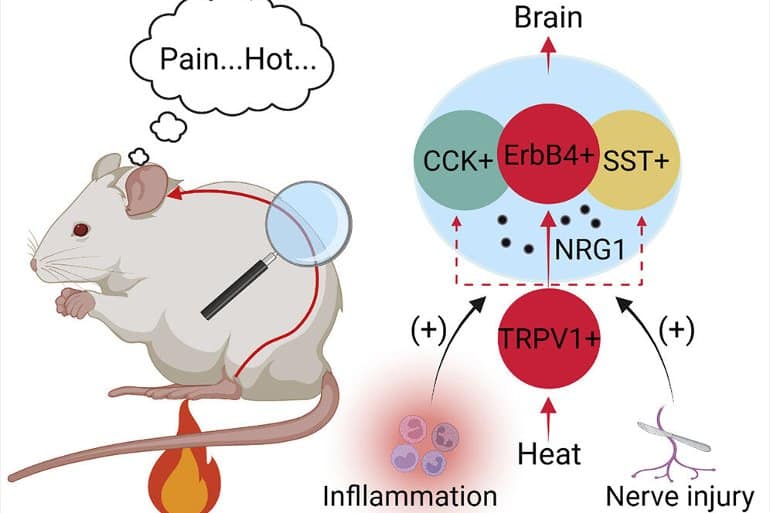
Applying ice or heat can provide relief from injuries, aches, and pains, but they shouldn’t be used interchangeably. Generally speaking, ice works well after a sudden injury while heat helps to soothe ongoing muscle aches and pains.
Ice works for injuries because it narrows your blood vessels, which helps prevent blood from accumulating at the site of injury, which will add to inflammation and swelling while delaying healing. This is also why elevation is helpful, since it limits blood flow to the area to minimize swelling.
A good rule of thumb to remember following an injury is RICE: rest, ice, compression, and elevation. You should generally ice the area for 48 to 72 hours to reduce secondary tissue damage and ease pain.
Ice should be applied for about 20 minutes once an hour. You don’t want to use ice longer than this as it could damage your skin or even lead to frostbite. Be sure the ice or gel pack you use can be wrapped around the injured area and even compressed to minimize swelling. You’ll want to protect your skin from direct exposure by applying a cloth or towel between your skin and the ice.
When to Use Heat…
For muscle aches and pains, applying a heat pack will help bring blood flow to the area, which promotes healing and soothes pain while increasing flexibility. As blood flow increases, so does the flow of oxygen and nutrients to the area while waste materials are removed.
Heat also works well for joint pain or as a pre-workout warm-up. Hot gel packs or heated water bottles work well for this and don’t pose any of the risks of electromagnetic field (EMF) exposure that most electric heating pads do.
Generally speaking, pain that is chronic and does not involve swelling will respond well to heat treatment. As with ice, you’ll want to use a barrier between the heat and your skin, such as a cloth. Apply the heat for 15 or 20 minutes at a time.
You may also want to try alternating heat and cold, which is a strategy often recommended by physical therapists and trainers. Apply heat for 20 minutes then follow immediately with 20 minutes of cold.
Related Coverage
For Faster Healing Use Heat, Not Ice
Another Way to Use Heat: Hyperthermic Conditioning
Heat-shock proteins (HSPs) are used by your cells to counteract potentially harmful stimulus. Whenever a cell is exposed to an unfriendly environment, the DNA separates in certain regions and begins to read the genetic code to produce these stress proteins.
HSPs are actually beneficial, helping to both prevent and repair damaged proteins. Heat-shock proteins are induced by heat, and this is one reason why sauna use is so beneficial.
According to Rhonda Perciavalle Patrick, Ph.D., increasing your core temperature for short periods, as is done by using a sauna, may offer dramatic improvements to your athletic performance.
Heat helps to soothe ongoing muscle aches and pains
She calls this concept “hyperthermic conditioning,” which emerging research suggests has multiple positive effects on your body, from increased endurance to the growth of new brain cells.
Hyperthemic conditioning, or “acclimating yourself to heat independent of aerobic physical activity through sauna use,” boosts endurance because it induces adaptations in your body that make it easier for you to perform when your body temperature is elevated.
In short, as your body is subjected to reasonable amounts of heat stress, it gradually becomes acclimated to the heat, prompting a number of beneficial changes to occur in your body.
The Benefits of Sauna Use
As your body adapts to heat stress, these adaptations include increased plasma volume and blood flow to your heart and muscles (which increase athletic endurance) along with increased muscle mass due to greater levels of heat-shock proteins and growth hormone.
In one study, those who had a 30-minute sauna session twice a week for three weeks after their workouts increased their time it took to run until exhaustion by more than 30 percent!
Daily sauna use has also been shown to cut men’s risk of death from fatal heart problems in half, compared to those who only used it once each week. Other physiologic adaptations that occur from hyperthermic conditioning include:
General Sauna Recommendations
Infrared saunas are known for their ability to promote detoxification, as discussed in a previous interview with Dr. Brian Clement, medical director of the Hippocrates Health Institute. By heating your tissues several inches deep, the infrared sauna can enhance your natural metabolic processes and blood circulation.
It also helps oxygenate your tissues. Your skin is a major organ of elimination, but many people do not sweat on a regular basis, thereby forgoing the benefits of this natural detoxification process. Repeated use of the sauna slowly restores skin elimination, which can help reduce your toxic load quite significantly. Many also enjoy saunas for relief of pain and muscle tension.
For all its health benefits, exposing your body to high temperatures should be done with commonsense and caution. If you’ve never taken a sauna before, start out by spending only a few minutes in there. Try a maximum of four minutes when first starting out.
Then, for each subsequent sauna, add about 30 seconds, and slowly work your way up to somewhere between 15 to 30 minutes. The reason for this is because the detoxification process can, in some cases, be severe, depending on your toxic load. General sauna recommendations are as follows:
- Infrared sauna: 160-180 degrees Fahrenheit, for 15-30 minutes
- Regular (Finnish wet or dry) sauna: 180-190 degrees Fahrenheit, for 10-20 minutes
Additionally, consider the following safety tips at all times:
When to Use Cold-Water Baths…
At the other end of the spectrum, exposing your body to cold temperatures may also have health benefits. For starters, intriguing research suggests heat-shock proteins may also be cold-induced.
In one animal study, cold exposure induced the expression of HSPs in brown fat, the implications of which are as yet unknown. It’s thought that cold-induced expression of heat-shock proteins may facilitate thermogenesis in beneficial brown fat, and, on a much broader scale, that exposing your body to reasonable amounts of both cold and heat stress may actually be beneficial.
Brown fat is a heat-generating type of fat that burns energy instead of storing it, and this may have important implications when it comes to weight loss. In one study, scientists found that they were able to activate brown fat in adult men by exposing them to cold temperatures. Swedish research published in 2009 also found that cold temperatures increased the activity in the subjects’ brown fat regions. In fact, cold-induced glucose uptake was increased by a factor of 15.
Based on animal models, researchers estimate that just 50 grams of brown fat (which is less than what most study volunteers have been found to have) could burn about 20 percent of your daily caloric intake—and more if “encouraged.”
Regular cold water and ice baths, otherwise known as cold-water immersion or “cryotherapy,” is also a popular technique among amateur and professional athletes, as it is thought to help reduce muscle inflammation and pain after exercise, as well as speed recovery time.
Indeed, after analyzing 17 trials involving over 360 people who either rested or immersed themselves in cold water after resistance training, cycling, or running, researchers found the cold-water baths were much more effective in relieving sore muscles one to four days after exercise.
Most studies on cold-water immersion report no or minimal side effects, so if you’re willing to spend 20 minutes or so in a cold tub of water, you may very well find some relief. Of course, common sense must be used. When you immerse yourself in cold water, it will shock your body to some degree, so you need to make sure the water is not too cold and you do not stay in it for too long.
Brief Exposure to Cold Water Might Promote ‘Hardening’
Exposing your whole body to cold water for short periods of time is also used to promote “hardening.” Hardening is the exposure to a natural stimulus, such as cold water, that results in increased tolerance to stress and/or disease. This was demonstrated by a study involving 10 healthy people who swam regularly in ice-cold water during the winter. Following exposure to the cold water, researchers noted:
- “Drastic” decrease in uric acid levels: High levels of uric acid are normally associated with gout, but it has been long known that people with high blood pressure, kidney disease, and people who are overweight often have elevated uric acid levels. When your uric acid level exceeds about 5.5 mg per deciliter, you have an increased risk for a host of diseases including heart disease, fatty liver, obesity, diabetes, hypertension, kidney disease, and more.
- Increase in glutathione: Glutathione is your body’s most powerful antioxidant, which keeps all other antioxidants performing at peak levels.
Personally, I have been experimenting with cold-water immersion for a couple of years. I will go into the shower without allowing it to warm up, and I also go in the ocean without a wet suit on when most people consider it too cold to swim. I have found that if I hold my breath it really helps adjust to the initial shock, and I rapidly acclimate to the cold. I have come to enjoy it and now view it as a form of healthy stress, very similar to exercise.
Cold therapy works well after a sudden injury,
If you decide to give any type of cold-water immersion a try, be sure to listen to your body and work up to the more advanced techniques gradually. There are a number of different options you can try:
- Place an ice pack on your upper back and upper chest for 30 minutes per day (you can do this while relaxing in front of the TV for example)
- Drink about 500 ml of ice water each morning
- Take cold showers
- Immerse yourself in ice water up to your waist for 10 minutes, three times per week. (Simply fill your tub with cold water and ice cubes)
And remember, you can use hot and cold therapeutically for muscle and joint pain and injuries, respectively. If you have swelling and an acute injury, apply cold using an ice or gel pack for 20 minutes at a time. For chronic aches and pains, use a gel pack or hot water bottle for 20 minutes for relief.


